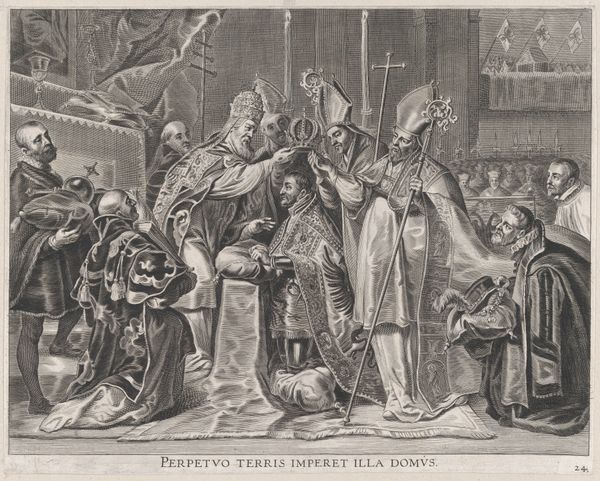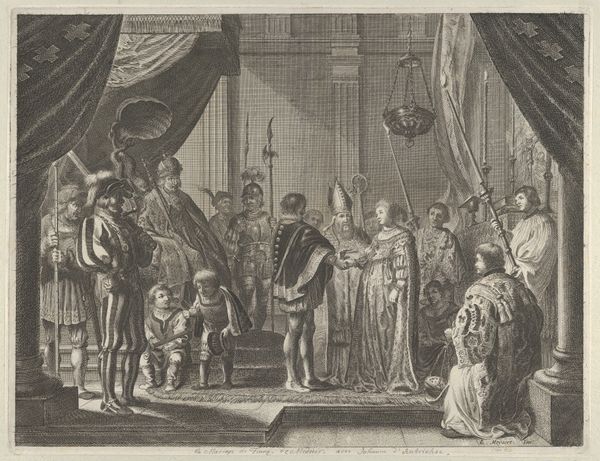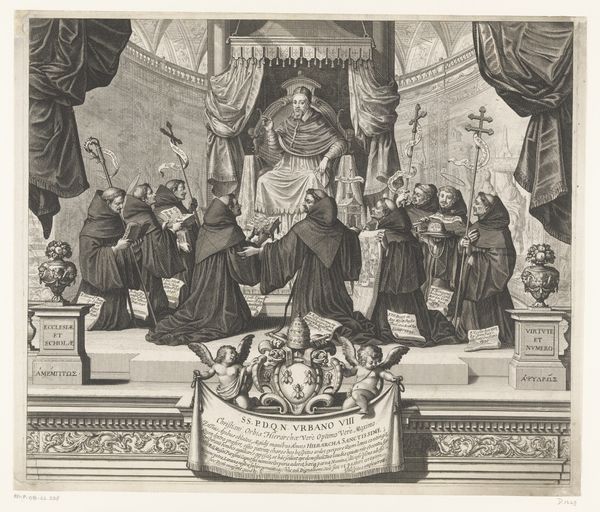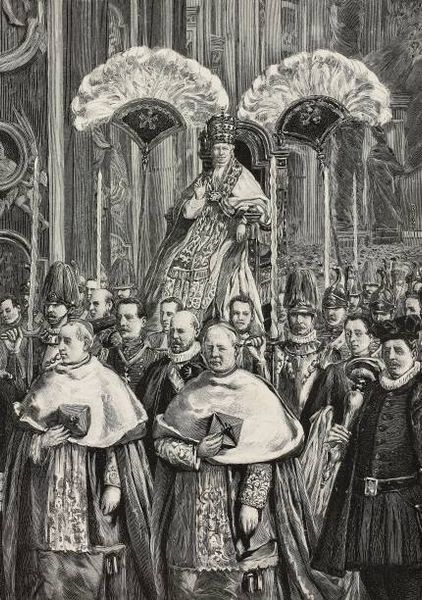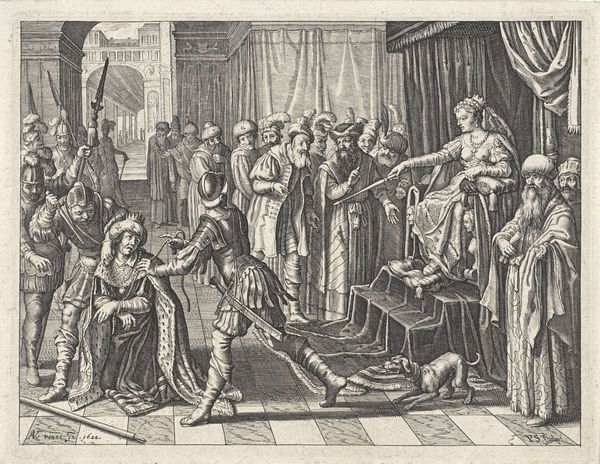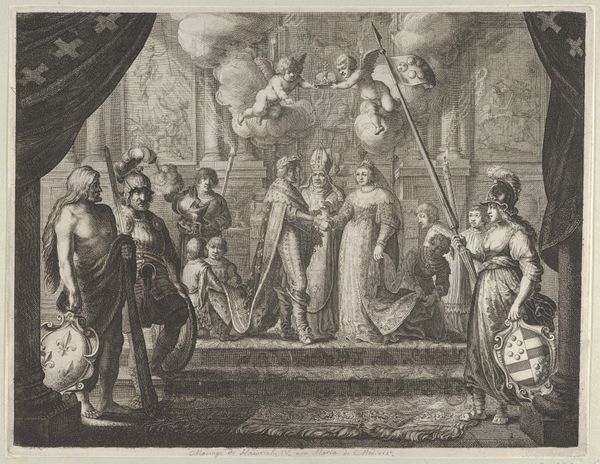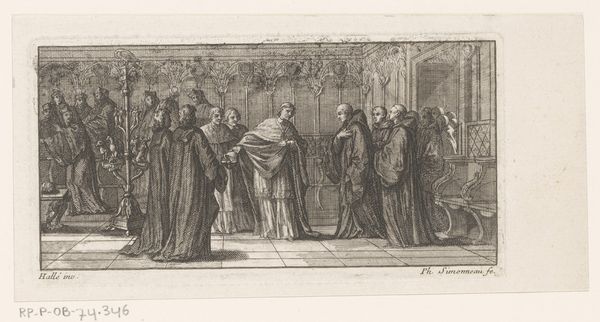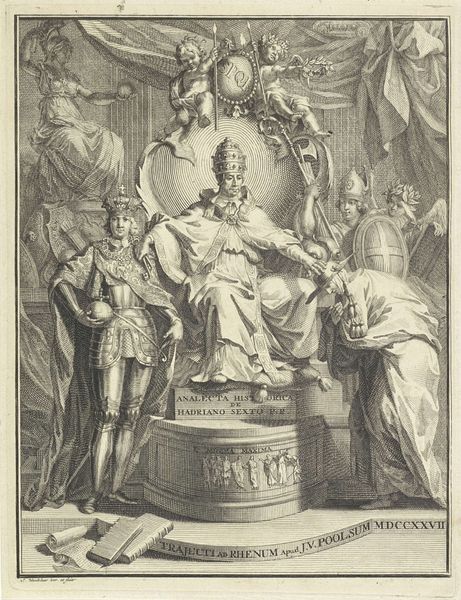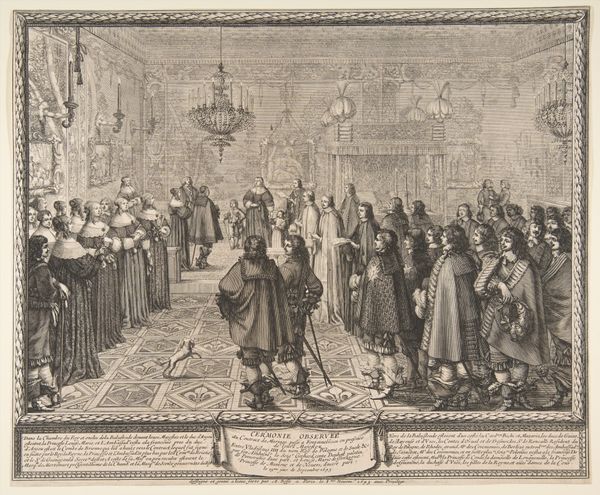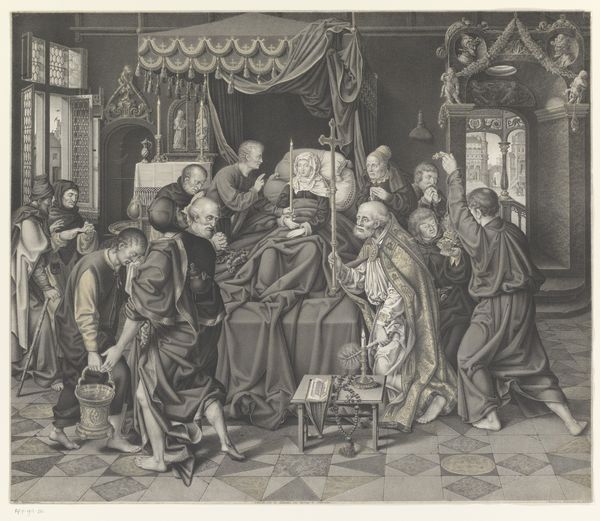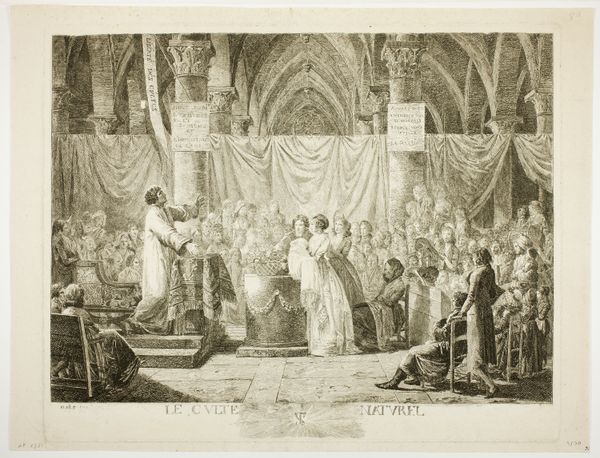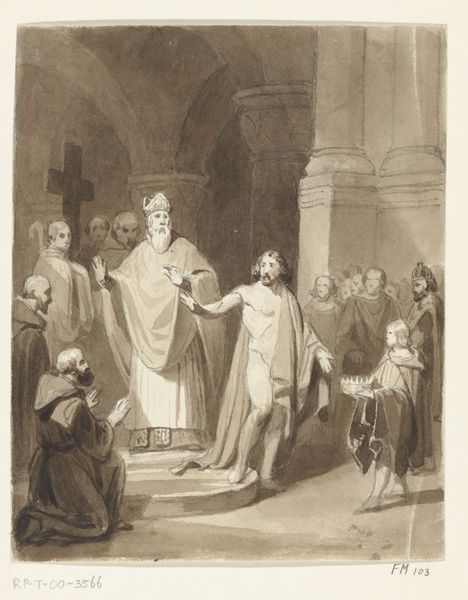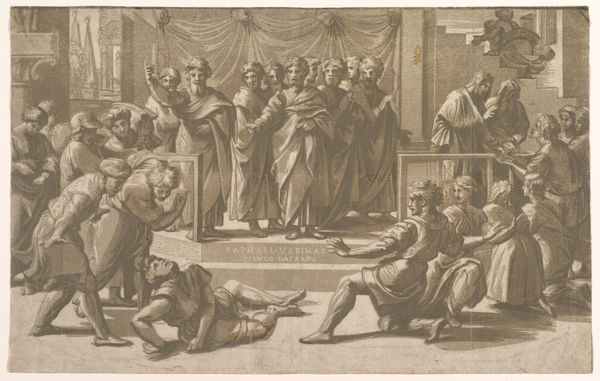
Plate 8: Emperor Maximilian II granting a crown to the coat of arms of Amsterdam, from Caspar Barlaeus, "Medicea Hospes" 1638
0:00
0:00
drawing, print, engraving
#
portrait
#
drawing
#
baroque
# print
#
figuration
#
line
#
history-painting
#
engraving
Dimensions: Sheet (Trimmed): 11 13/16 × 15 3/8 in. (30 × 39.1 cm)
Copyright: Public Domain
Pieter Nolpe’s engraving immortalizes Emperor Maximilian II bestowing a crown upon Amsterdam's coat of arms. The gesture of offering a crown carries the weight of power, honor, and divine sanction—themes echoed through history, from ancient rulers to medieval coronations. Consider the act of kneeling—a profound symbol of submission or reverence. We find its echoes in religious art, where supplicants kneel before divine figures, mirroring the posture here. The transfer of power becomes a potent, repeated motif throughout centuries. The crown is a fascinating element. It's not merely headgear, but an emblem of authority that reflects the complex dance between the earthly and divine. Think of classical art, where laurel wreaths signified victory and imperial power. The crown is the heir of this symbol, evolving over time, yet fundamentally rooted in our collective memory of leadership and aspiration. It has the power to engage us on a deep, subconscious level.
Comments
No comments
Be the first to comment and join the conversation on the ultimate creative platform.
